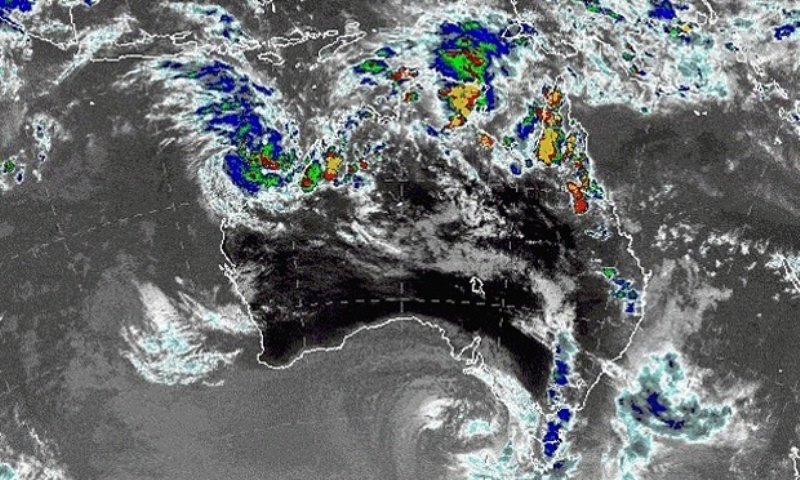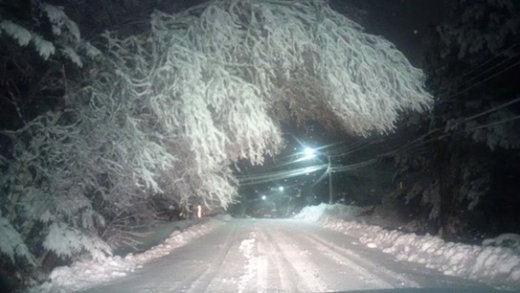
© Bureau of MeteorologyA BoM image showing storm cells over parts of Australia on 29 January
Thousands of Sydneysiders are without power after a fierce thunderstorm lashed the city, complete with torrential downpours and dangerous wind gusts of more than 100km/h.
It's the second day of wild weather for Sydney, with a dangerous storm cell battering much of NSW this afternoon. Sydney's west copped it first, complete with damaging winds, heavy rain and even hail.
The Bureau of Meteorology, which labelled the storm cell "very dangerous" said Toongabbie recorded 30mm of rain in just 10 minutes about 4.50pm. Strathfield was also drenched, with about 36mm of rain in 15 minutes, as wild winds battered the west.
Wind gusts of up to 98km/h were recorded at Badgerys Creek, before the wild weather shifted toward the inner city.
Sydney Airport recorded winds of up to 107km/h this evening as winds and rain lashed the CBD, the Sydney Harbour Bridge, Sydney Airport Sydney Olympic Park and Ryde.
The eastern suburbs and inner west were also lashed by the heavy rains, with the BoM warning of possible flash flooding.


Comment: Nacreous clouds have tiny ice crystals in that light up with iridescent color with they are hit with light from the rising or setting sun. Absolutely beautiful!